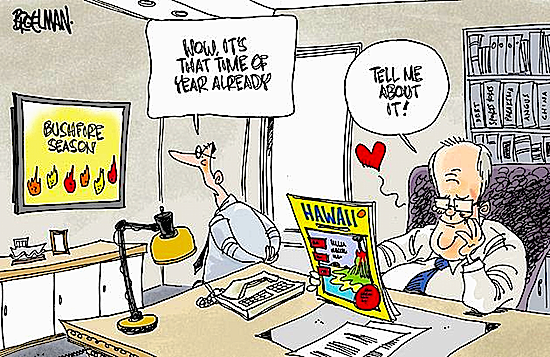Search
Recent comments
- UK-israhell.....
1 hour 55 min ago - albania.....
2 hours 3 min ago - israhell crap.....
2 hours 21 min ago - waste of cash....
4 hours 59 min ago - marles' bluster....
5 hours 20 min ago - fascism français....
5 hours 24 min ago - russian subs in swedish waters....
6 hours 3 min ago - more polling....
5 hours 32 min ago - they know....
10 hours 20 min ago - past readings....
11 hours 19 min ago
Democracy Links
Member's Off-site Blogs
tell him he's dreaming...

- By Gus Leonisky at 13 Dec 2020 - 6:39am
- Gus Leonisky's blog
- Login or register to post comments
thinking of shirts...
Suitable for anyone of the male gender tendency, including PMs...
The Morrison government’s spin has become so divorced from reality that many of its policy justifications should be deemed false and misleading advertising. Whether it be IR policy that will suppress wage growth being pitched as good for workers, or a cashless debit card that clearly targets Indigenous people pitched as desired and justified on the basis of anecdotes, what they sell is not what is delivered.
And no more so is this the case with the government’s tax cuts.
Ever since the LNP has sought to make our income tax system less progressive, it has sold it as being about ending “bracket creep”.
In his 2018 budget speech, then Treasurer Scott Morrison stated the tax cuts would be “protecting what Australians earn from bracket creep”
The following day he told parliament “we are acting to remove the impact of bracket creep over that seven-year tax plan”.
By November that year he was boldly stating that “Australians going to work today on a middle income over the next 10 years will not see bracket creep, the vast majority of them, for their entire working lives”.
Alas, much as his claim that this weekend he would be attending the UN climate summit to “correct mistruths” and then not actually being invited to speak, his claims about bracket creep have been found to be utterly hollow.
This week the Parliamentary Budget Office’s annual “medium term budget predictions” revealed the reality behind the sales pitch.
Unlike the Treasury department, the PBO does not report to a minister and so can reveal the unvarnished truth.
The PBO examined the change in people’s average tax rate from 2017-18 out to 2030-31, and rather than as Morrison would have had us believe that a vast majority of Australia “will not see bracket creep” it found that “individuals in the second and third quintiles (together spanning the taxable income range $20,001 to $58,000), are expected to face the largest effects of bracket creep.”
Bracket creep does not disappear because you remove a marginal tax bracket as the government has legislated to occur – even if your income stays within one marginal bracket your average tax rate will increase as your income increases.
The problem with bracket creep is purely due to a wage rise that occurs mostly to keep pace with inflation, your tax rate will go up because the tax brackets are not adjusted for inflation.
One reason why the government might not be actually delivering an end to bracket creep is it doesn’t know what it actually is.
Last year the Treasurer Josh Frydenberg told parliament that “creating one major tax bracket between $45,000 and $200,000” would “tackle bracket creep”. He suggested that “if you get another job or a promotion, or you do some overtime, you won’t necessarily pay a higher marginal rate of tax.”
But that is not bracket creep. That is you getting a higher paid job and as a result paying a higher level of tax.
That is how progressive taxation has worked for over a century.
And this explains why the pitch to solve bracket creep was really just a distraction for what the government really wanted to do – reduce taxes for higher incomes.
And the PBO has found that is exactly what they have done.
Out to the end of this decade bracket creep will raise the average tax rate rise for middle-income taxpayers by 6.3%pts, but the tax cuts will only reduce that rate by 2.4%pts.
As a result, the average tax rate for median income taxpayers will by 2030-31 have risen 3.9%pts compared to what they paid in 2017-18.
Not exactly a case of “will not see bracket creep ... for their entire working lives”.
But the PBO found that the highest 20% of taxpayers are “projected to have a lower average tax rate in 2030-31 compared to 2017-18, while all other quintiles are projected to experience increasing average rates over that time”.
The government wanted tax cuts for the wealthy, and that is what they have delivered.
Ignore the spin; focus on the delivery.
Read more:
https://www.theguardian.com/business/commentisfree/2020/dec/13/the-morrison-government-wanted-tax-cuts-for-the-wealthy-and-that-is-what-they-have-delivered